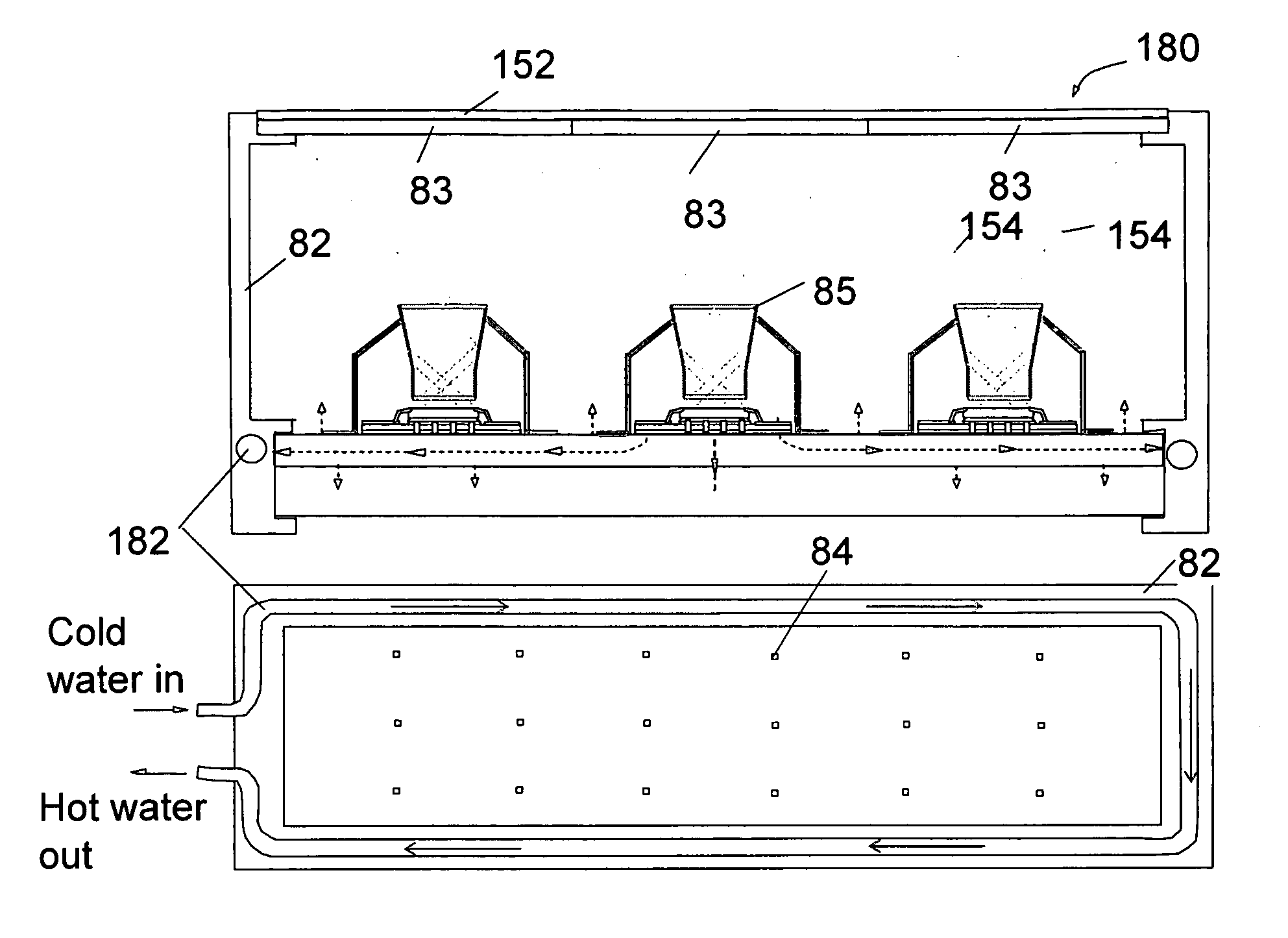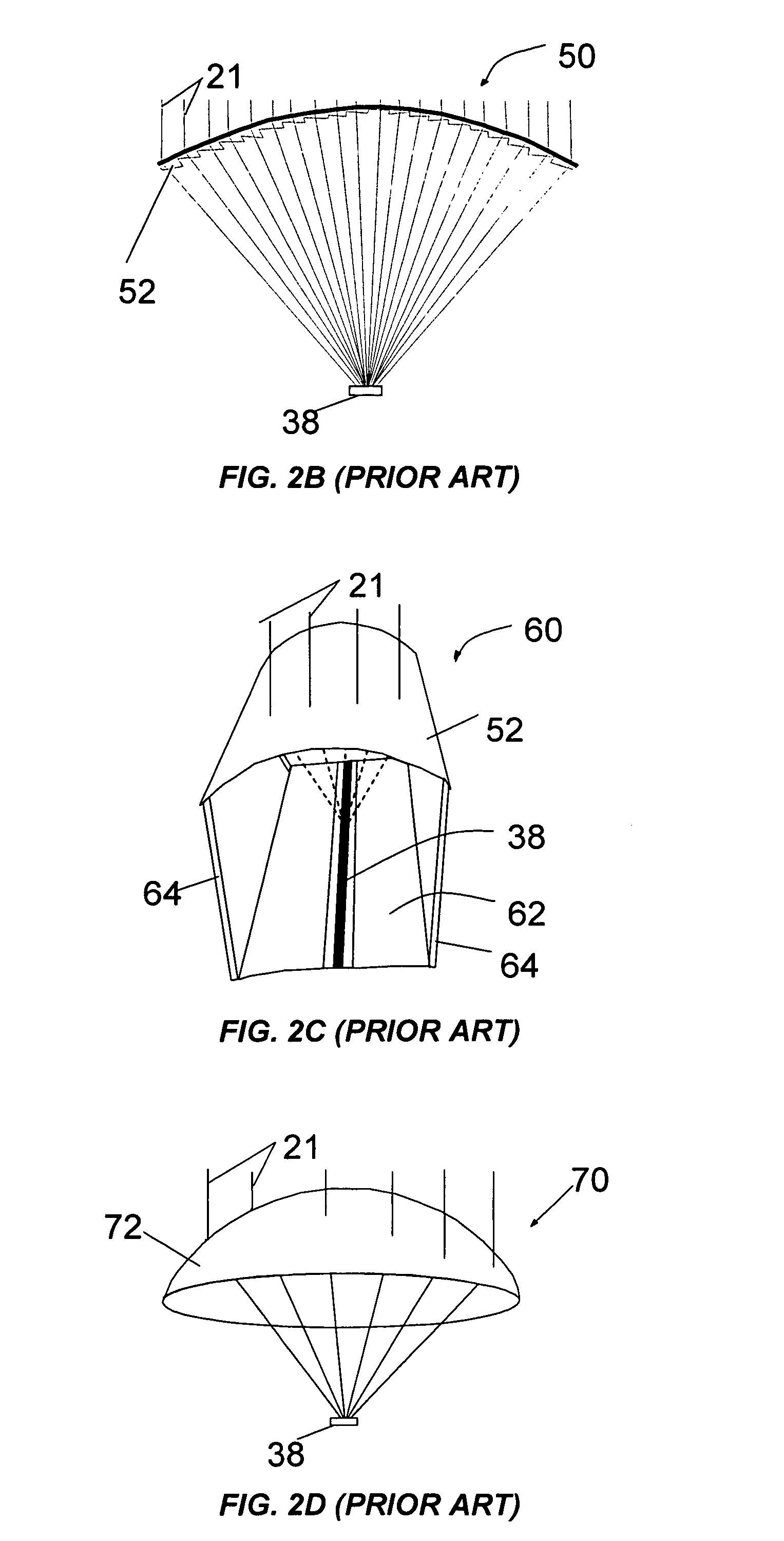High efficiency concentrating photovoltaic module with reflective optics
a photovoltaic module and high-efficiency technology, applied in the direction of pv power plants, thermal-pv hybrid energy generation, semiconductor devices, etc., can solve the problems of reducing the efficiency of solar cells, reducing the reliability or requirement of solar cells, and requiring higher losses, so as to reduce the overall cost of generating electricity per kilowatt hour, improve solar conversion efficiency, and reduce initial costs
- Summary
- Abstract
- Description
- Claims
- Application Information
AI Technical Summary
Benefits of technology
Problems solved by technology
Method used
Image
Examples
Embodiment Construction
[0046]The present invention will now be described more fully hereinafter with references to the accompanying drawings, in which preferred embodiments of the invention are shown. This invention may, however, be embodied in many different forms and should not be constructed as limited to the embodiments set forth herein. Rather, these embodiments are provided so that this disclosure will be thorough and complete, and will fully convey the scope of the invention to those skilled in the art. Like numbers refer to like elements throughout.
[0047]FIG. 1 shows a typical grid-connected concentrated photovoltaic solar system. The solar array 22 consists of one or more CPV modules which convert sunlight 21 into electricity. The sun tracker 24 is a device that rotates in 2-axes to track the sun across the sky throughout the day to keep the sun rays directly on the solar array. It is advantageous for the solar array to be oriented substantially perpendicular to the position of the sun throughout...
PUM
 Login to View More
Login to View More Abstract
Description
Claims
Application Information
 Login to View More
Login to View More - R&D
- Intellectual Property
- Life Sciences
- Materials
- Tech Scout
- Unparalleled Data Quality
- Higher Quality Content
- 60% Fewer Hallucinations
Browse by: Latest US Patents, China's latest patents, Technical Efficacy Thesaurus, Application Domain, Technology Topic, Popular Technical Reports.
© 2025 PatSnap. All rights reserved.Legal|Privacy policy|Modern Slavery Act Transparency Statement|Sitemap|About US| Contact US: help@patsnap.com



